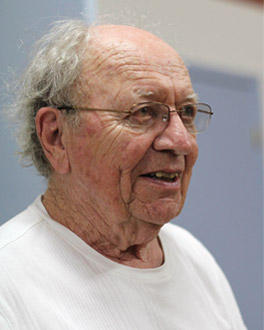Why do we collect? What is collecting art? What do you collect?
Anyone lucky enough to have a home accumulates things: stuff we use and need, sit and sleep on, prepare meals with, and so on. We also collect sentimental objects that have less obvious utility: souvenirs and albums, diplomas and trophies. Some collections we inherit, like the thousands of matchbook covers my son-in-law was left by his stepfather. Then of course there are the stacks and shelves of books, some never to be read again (or ever), and myriad constellations of family photographs.
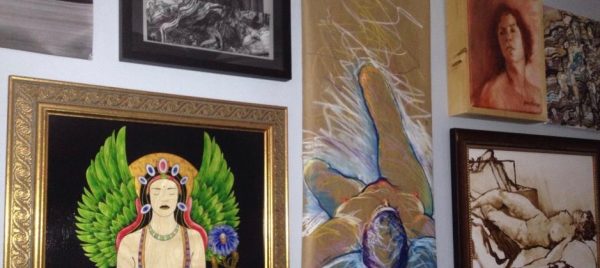
A selection of wall from Tanya Rich’s living room.
Why do we collect these less useful or necessary objects? In part, perhaps, to affirm the substance and meaning of our lives, and to celebrate or commemorate our dear ones, living or dead. It keeps them close to us. Hobbies and interests also spawn collections. We amass cookbooks, woodworking tools . . . as an artist, for example, I have a collection of hundreds of brushes that now includes any stick to which twigs have been tied. I have a family friend who collects thousands of clothespins reflecting different ways of hanging garments out to dry.
Up until the rise of a secular merchant class in 16th century Europe, art images—murals, stained glass, architectural sculpture—were confined to the church for the “glory of God” and also to teach the illiterate masses the doctrines of faith. Later, collecting of art was a privilege limited to royalty or the very wealthy. Most art museums today house what were once religious, royal or wealthy personal collections. Much of it was stolen as booty in times of military conquest or the turmoil of war.
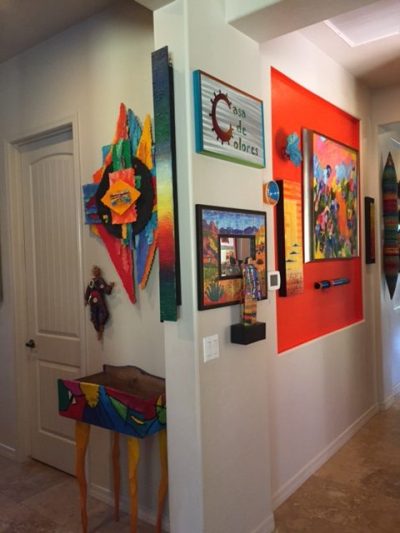
A corner in art collector and Drawing Studio donors Jeffrey Spira and Wally Prawicki’s Sedona home.
For ordinary people, collecting original art is a fairly recent phenomenon. No one collected art in my family or my neighborhood when I was young. I remember only two matching reproductions of flowers that hung on each end of the sofa in my childhood living room.
But during my lifetime, I’ve gotten to know a lot people at every level of income who collect art. Many of my friends have substantial collections hanging in every room of their homes, often like a gallery, where a visitor like me can shamelessly roam the back rooms to see what they love.
While the art in many homes is informal and casual, often including our children’s or our own art makings, I know of many inspiring personal art collections that take on a life of their own. They’re as unforgettable as a small museum. My artist-friend Margo Burwell collects the art of her friends on a regular basis. “As an artist,” says Margo, “I know how meaningful it is both to buy and to have the work of my artist friends who are ‘putting it out there’ too.”
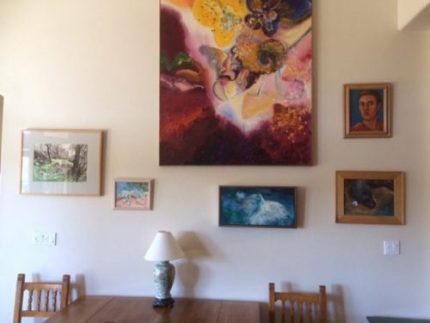
Margo Burwell’s dining area. Margo is an artist and collector.
Another collection, located at Rancho Linda Vista Art Community in Oracle, beautifully exemplifies the creative nature of art collecting. Arnold Nelson, a medical doctor and also an artist, along with his wife Marilyn and their family, have lived at the Ranch for more than 45 years. During this time they have built a collection of art by RLV artists and friends that now numbers over 600 works. I can remember the first piece they acquired in 1970, a painting by resident artist Bruce McGrew, received in trade for a washing machine.
The Nelson family has always kept their collection open to the RLV community and its many visitors. This allows us to enjoy and share a collection that illuminates RLV’s extraordinary history, its relationships, and its presence in the larger community. The collection itself is a work in progress that reinforces these connections and stories and renders them visible.
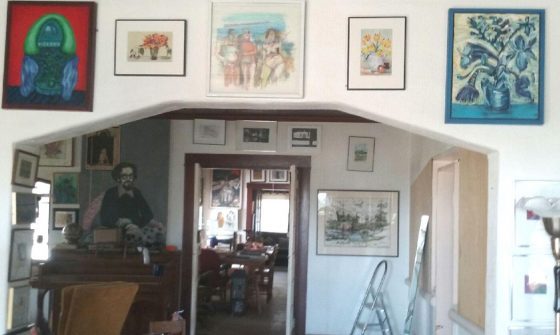
The Nelson family home, filled with 600 works of art from friends and local artists.
A personal art collection, whether large or small, is in fact an ongoing process of creative discovery and expression that can profoundly enrich one’s life and relationships. As Dr. Nelson puts it, “each piece has a story connected to it that keeps my many art friends close to me over the years.”
My small home has a corner for my own work, mostly in progress, while the rest of the walls are dedicated to the work of my friends. Their art affects my daily life in ways that transcends the sentimental value of family photographs or souvenirs, because each work continuously reveals the deep and subtle creative life of my artist friends. Their work provides a rich and vast experience beyond the reach of a photographed portrait or vacation snapshot.
Each fall at TDS we host the Small Wonders exhibition and sale featuring works of art by our members and friends. Small Wonders is not juried but is limited to small works at reasonable prices. This gives us all an opportunity to support TDS. I urge any of our TDS family to participate, by showing or using the opportunity to enjoy the creative energy of artist friends in your daily life.

